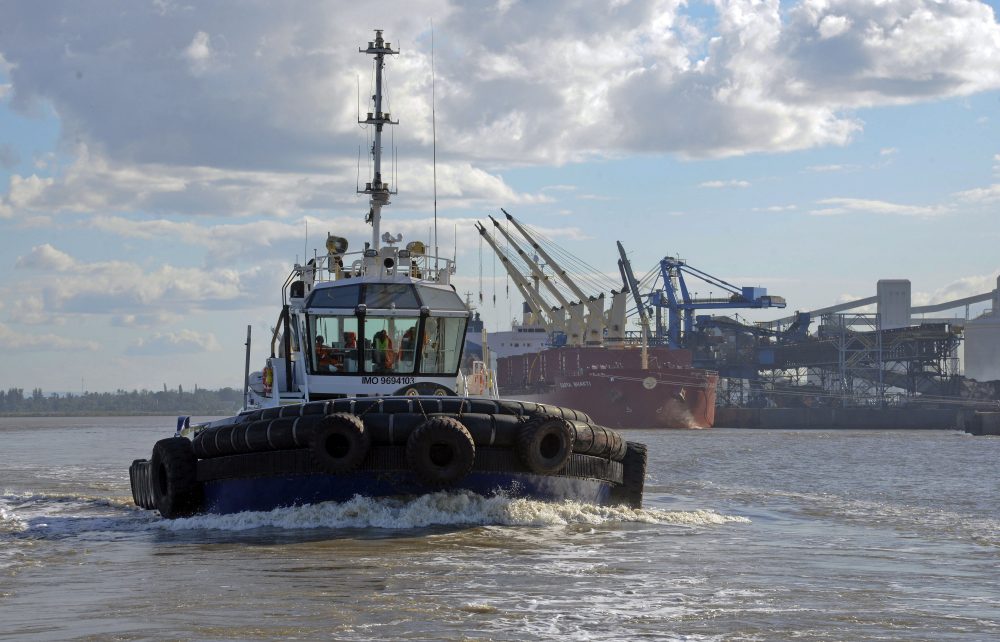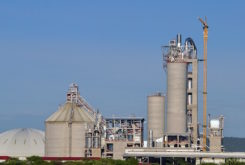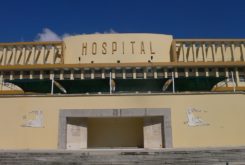Mozambique’s slowly unfolding coal boom is driving port investment across the country. While Maputo has been steadily redeveloped over the quarter century since the end of the civil war, the country’s other international ports are primarily being upgraded to serve the coal industry. As a result, Mozambique is in the midst of the most sustained period of port investment of any African country since independence.
A total of $800 million was invested in the Port of Maputo between 2012 and 2016, with another $1.2 billion planned before 2033, when Maputo Port Development Company (MPDC) aims to be handling 30 million metric tonnes (mt)/year.
It is on course to achieve this, with 18.2 million mt being shipped into or out of the port last year. This is 3.3 million mt or 22% up on 2016 and was enabled by the completion of a comprehensive dredging programme. Ferrochrome and chromium exports have seen the biggest increase, from 410,000 tons in 2016 to just under 1 million tons last year.
The minimum depth of the approach channel has been increased from 11m to 14.2m. MPDC executive director Osório Lucas said: “Dredging has led to a 40% increase in cargo capacity in Maputo and a 55% increase in cargo capacity at Matola.” MPDC is owned by DP World, Grindrod, state owned Portos e Caminhos de Ferro de Moçambique (CFM) and Moçambique Gestores.
Work is underway to increase the container terminal’s handling capacity from 150,000 TEU/year to 250,000 TEU/year by the end of this year, with 450,000 TEU/year planned in the next phase. A TEU, or twenty foot equivalent unit, is the industry standard container size. Berths 6-9 at the port have already been improved and MPDC, which accounts for 6% of government tax revenue, has announced that it is investing $64 million of upgrades between 2016 and 2019.
Cornelder retains Beira
Cornelder de Moçambique’s (CdM) concession to operate the Port of Beira, including Beira Container Terminal, has been extended by ten years by the government. It will now run until 2033, making it more attractive for the company to invest in further improvements and new cargo handling equipment. CdM is owned by Dutch firm Cornelder, CFM and Mozambican private sector investors. It has managed the port since 1998.
It is interesting that the government has revealed that the details of the contract will be decided after the concession extension has been signed. A new fertiliser terminal will definitely be built but the Minister of Industry and Commerce, Ragendra de Sousa, will negotiate the other terms with the operator, including how much the handling capacities of the existing container and multi-purpose terminals will be increased.
Maputo has previously stated that the container facility, which currently handles about 200,000 TEU/year will be expanded to 700,000 TEU/year but the timetable for achieving this has not yet been agreed. As ever, the devil will be in the detail. CdM has already helped to finance a range of upgrades:
- The dredging of the access channel by Dutch firm Van Oord. Silting had exacerbated existing problems;
- The construction of a new five lane access road, which was completed in December. CdM contributed $6.2 million to the project.
- The provision of automatic entrance gates;
- The installation of the Navis N4 terminal operating system.
It might be expected that Vale’s decision to switch its coal exports from Beira to Nacala would see investment in the former reduced but this may not be the case. Firstly, lower coal demand could encourage CdM and CFM to promote the use of the port for non-dry bulk exports. In particular, Beira looks set to handle more cargo bound for or exported from Zimbabwe and Zambia via the Machipanda Railway.
New coal terminal for Beira
Secondly, Essar Ports is to press ahead with the construction of a new dedicated coal export terminal at the port. The Indian firm signed an agreement with the government last August to build and operate the new coal terminal in partnership with CFM, which will take a 30% stake in the venture. Under the design, build, own, operate and transfer contract, ownership will pass to the state after 30 years.
Beira currently has annual coal handling capacity of just 6 million mt/year but the new terminal will provide 20 million mt/year. Essar is investing $260 million in developing the first 10 million mt/year phase, with a projected completion date of 2020. Tej Nargundkar, the CEO of Mozambique Essar Ports, told the South African Coal Exporters Conference in February that the timing of the second 10 million mt/year phase has not yet been fixed. Construction will begin when demand dictates but two Indian miners, Jindal and ICVL, are already using the port.
Nargundkar said: “The new coal terminal at Beira will be the closest evacuation facility for Mozambique’s coal reserves, estimated in excess of 2 billion tonnes…I think the terminal would primarily serve as a coking coal terminal, because India is a growing country in terms of increasing its steel output.” Unlike the port’s previous reliance on Vale, the coal terminal will serve a range of customers.
Apart from domestic production, Beira could handle Botswanan or Zimbabwean coal in the future, although Botswanan coal could also be shipped out of a proposed new port at Techobanine, in the south of Mozambique. The port project and associated rail line from the Botswanan coal fields have been under discussion for almost a decade.
Low coal prices and Gaborone’s uncertainty over whether to opt for a line to Techobanine, Walvis Bay in Namibia or Richards Bay Coal Terminal in South Africa, deterred development. A partial recovery in global demand saw talks between Botswana, Mozambique and Zimbabwe resume in March.
Given Essar’s involvement, most coal is expected to be exported to India. Mozambique is particularly well placed for supplying India, with a transport distance of 3,420km from Beira to Essar’s import ports of Hazzira and Salaya on the west coast of India. That is about half the 6,956km from Newcastle in Mozambique’s biggest competitor, Australia, to the same ports.
Essar plans to increase the combined import capacity of its four Indian coal terminals from 110 million mt/year to 150 million mt/year by late 2020. India is also an attractive market because of draft restrictions at Beira. With a maximum draft of 12m, the port can only handle vessels of up to 50,000 gross tonnes, rising to 60,000 gross tonnes after the completion of this year’s dredging programme. However, many Indian coal ports have a similar draft, making Beira a good fit.
Nacala and beyond
Given its position as the world’s biggest coal consumer, China would be another option. Much will depend on the extent to which Beijing’s new restrictions on coal imports, which were imposed on 14 April, are observed. Chinese ports can generally handle larger vessels, so any Mozambican imports are likely to be shipped out of Nacala, which is the deepest natural harbour on the east coast of Africa and which can already handle vessels with a gross tonnage of up to 180,000. Vale intends to export 18 million mt/year from the port next year.
Aside from its position is the biggest coal port in the country, Nacala is also expected to become the biggest container port on the east coast of Africa between Maputo and Dar es Salaam. Nacala Container Terminal, which is operated by Portos do Norte, already has handling capacity of 180,000 TEU/year. Work began in March on increasing this to 250,000 TEU/year with funding from the Japan International Cooperation Agency, which has now committed $400 million to the port.
The development of yet another coal export terminal, at Macuse, should provide more competition for exports. In March, the government approved the development plan submitted by the Thai Mozambique Logistics (TML) consortium of Italian Thai Development (60%), CFM (20%) and Zambeze Integrated Development Corridor (Codiza) (20%).
TML chief executive José Pires da Fonseca said that 100 million mt/year will be provided over four phases, starting with 30 million mt/year by 2021. This suggests that the government now expects Macuse to become the pre-eminent coal port in the country, ahead even of Nacala. The port could also handle iron ore exports from Australian firm Baobab’s planned iron ore project in Tete, although a new port at Quelimane has also been mooted.
Matola Coal Terminal (MCT) operates in a separate orbit to the other coal ports in the country as it does not ship any Mozambican coal. It currently handles exclusively South African coal but Botswana could provide another business stream. MCT, which is operated by South Africa’s Grindrod, handled a record 5.3 million mt last year and capacity will be ramped up as South Africa’s new coal province – the Waterberg Basin – is developed.
Aside from upgrades to the railway between Matola and coal mines in South Africa’s Mpumalanga Province, Matola has benefitted from the extension of its quay to handle vessels of up to 275m in length, plus the dredging of the port and access channel by Jan de Nul Dredging Middle East. MCT can now serve vessels of up to 15.5m draught at high tide and 14.5m at low tide, a big improvement on the previous figure of 11m.
This has boosted the average gross tonnage of coal-carrying vessels at the port to a record 85,000t last year. The biggest ship to call at the port was the MV Amani, which handled 96,400 tonnes of magnetite. MCT’s handling capacity is in the process of being increased to 7 million mt/year and further expansion is expected.
Coastal shipping
As in most other parts of the world, international shipping companies handle most Mozambican trade. However, the government hopes that a recent agreement will boost domestic participation in coastal shipping. In March, state owned Transmaritima signed an agreement with Peschaud, whereby the French firm will launch cargo services between Mozambican ports before the end of this year.
Chairperson Christophe Peschaud said: “We are aware that it is a national priority for us to work with secondary ports. We think this project comes in time to provide services for the major developments that are going to happen, mainly in the north of the country.”
North-south trade in the country is limited by the shortcomings in the road network and the lack of a north-south railway. Coastal shipping would also be sheltered from the security threats that have affected north-south road haulage in the country over the past three years. However, it is worth remembering that the World Bank set aside $74 million to encourage Mozambican coastal shipping between 1992 and 1999 to little effect.




